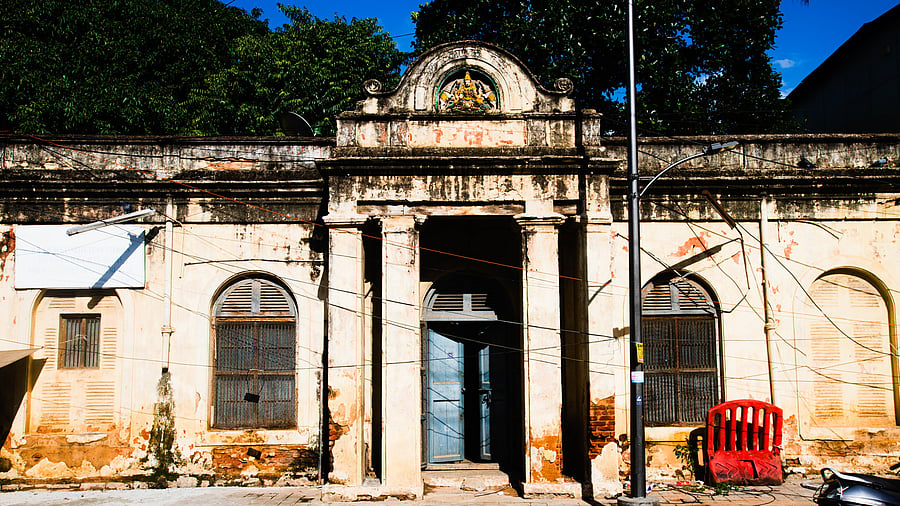
The 160-year-old dilapidated structure on Kamaraj Road, earlier known as Cavalry Road, has recently been restored to its old glory. Earlier used as a Chaturveda Siddantha Sabha School, the structure was left high and dry for at least the past 15 years.
Credit Special arrangement.
Bengaluru: Some buildings are known to live multiple lives -- The one imagined by their makers and the lives they endure afterwards. For a 160-year-old dilapidated structure in the Cantonment area, extensive restoration works have given it a fresh lease of life and along with it, a new purpose.
Originally known as Chaturveda Siddantha Sabha School, the imposing structure located on the Kamaraj Road (earlier Cavalry Road) with its spacious halls, tall pillars and large wooden windows is getting ready to host its first 'Sabha Open House' on April 12 and 13.
The two-day inaugural event will have a platter of art and cultural events, including talks by scholars like Janaki Nair and Annapurna Garimella on the history of the Cantonment area, followed by a musical closing act by Susheela Raman and Jeet Thayil.
For people to enjoy art after their regular work hours, the organisers also plan the ‘Sabha After Hours’ with Susheela Raman, a non-alcoholic event filled with music, poetry and other gigs from 9 to 10.30 pm.
Restoring forgotten structures revives buried stories, preserving the past for future generations. In the same vein, the restorers of 'Sabha' have preserved its original name and fundamental architecture, which was lying in shambles for at least 15 years.
"When I first saw the building, I realised it was a beautiful structure with great bones, but structurally, it was in bad shape. There was a lot of debris, and garbage on site, along with rat infestation. There were lots of weeds growing in the backyard. The roof would leak in the rainy season while the floor would be damp because of the high underground water levels," chief architect Bijoy Ramachandran told DH.
The structure consists of two buildings: One with a pitched roof; and the other with a Madras terrace, a traditional flat roof construction method marked by wooden beams with diagonally laid bricks.
"To redo some parts of the Madras terrace we got regular bricks and cut them into the old, thin bricks and fixed the roof using lime mortar," Ramachandran said.
While special emphasis was laid on preserving the original structure, there have also been significant additions. Along with new-age air-conditioning, electricity, sound and light set-up for cultural performances, a power drain has been added to the structure to resolve the damp floor problem. A cafe was also added on top of one of the buildings.
The Dutch windows opening the building to the world have also been restored to their past glory with the help of skilled carpenters from Kerala.
Though the building is owned by RBANM’s Educational Charities, the restoration work, which started in 2022, was taken up by the Ammini Trust.
"We wanted to create a public space for the people while it remains true to its historical character because it’s beautiful. It can be a learning and teaching moment of how the old architecture used to be and also inspire others to similar work," V Ravichandar, a Trustee of the Ammini Trust, said.
Highlighting his inspiration to take up the restoration along with his wife, Hema, Ravichandar said he wanted to build a space to promote art and culture for children.
"For the past five weeks, we have been running free art classes in Sabha for children from underprivileged backgrounds and plan to provide free art exposure to such kids in the future," he added.
He also shared that restoring the place consumed 40-50% more funds than building a similar structure from scratch.
Ramachandran wishes that the project will inspire more people to preserve such old structures in the area. "If there are other patrons, agencies or the government, we can retrofit these buildings, giving them another 150 years of life. The Cantonment area could become an amazing art district in the city because the buildings in the area have incredible architectural value. All it needs is someone’s imagination and patronage."